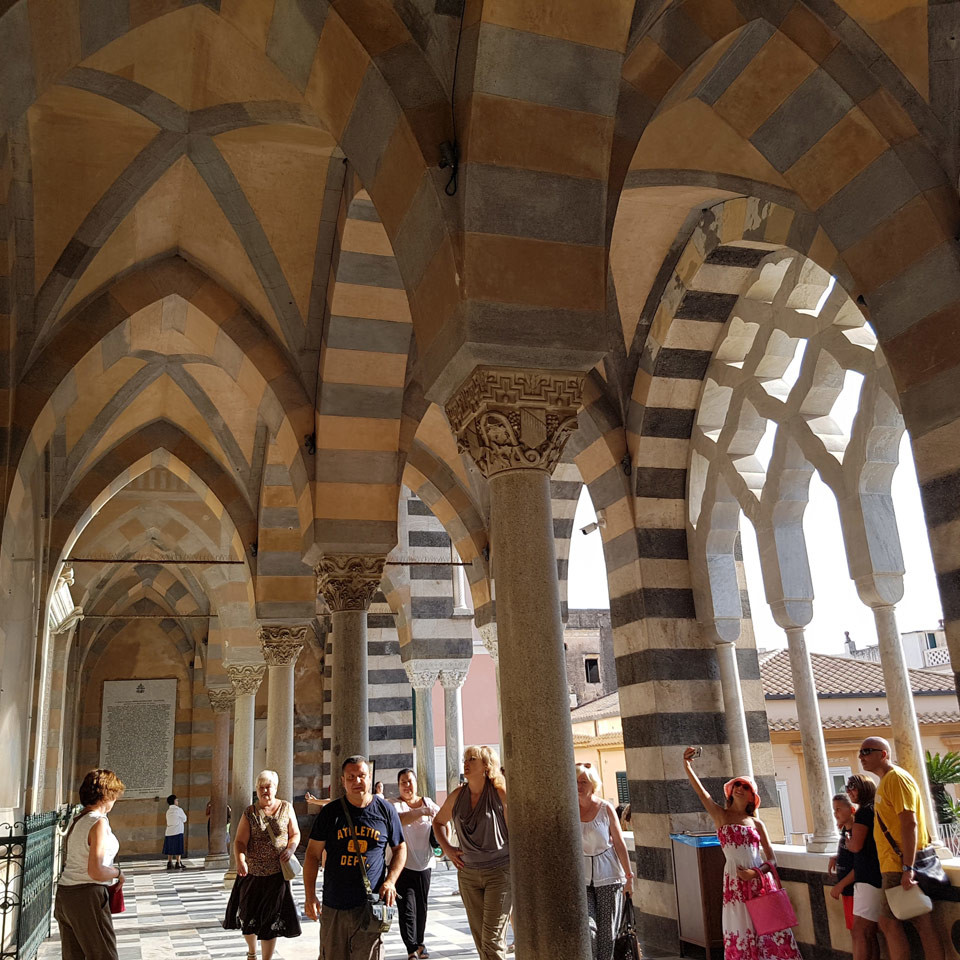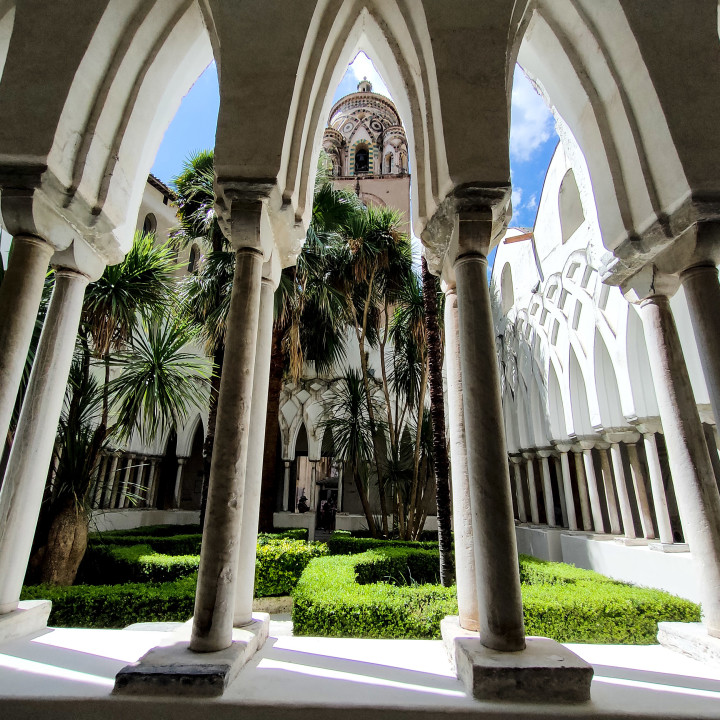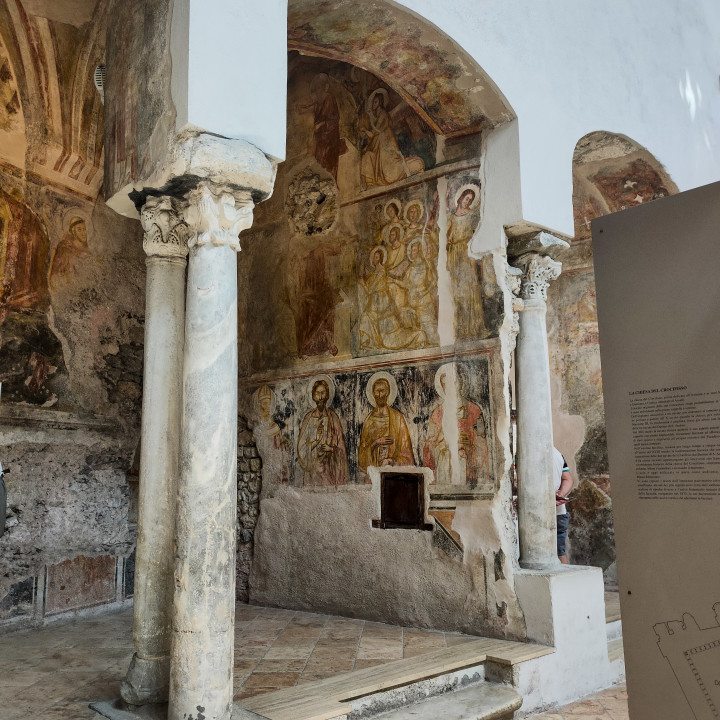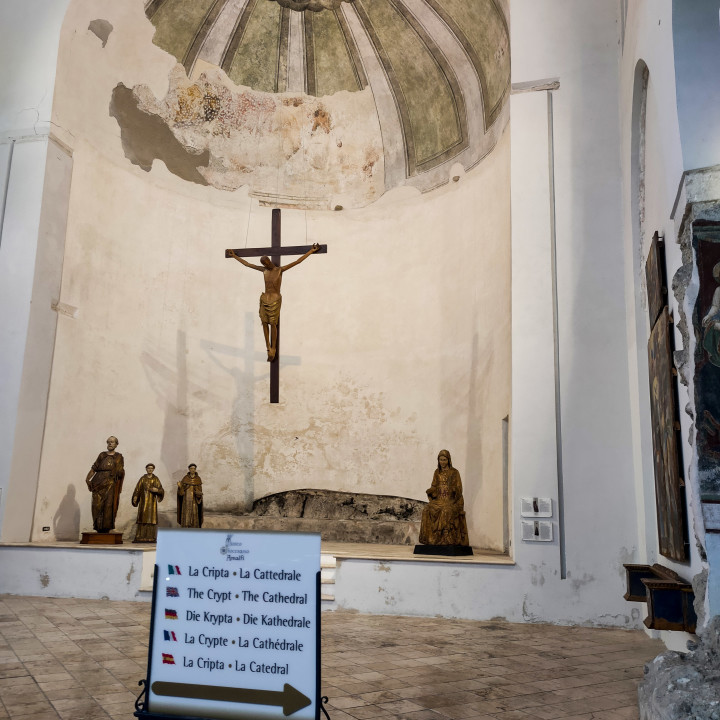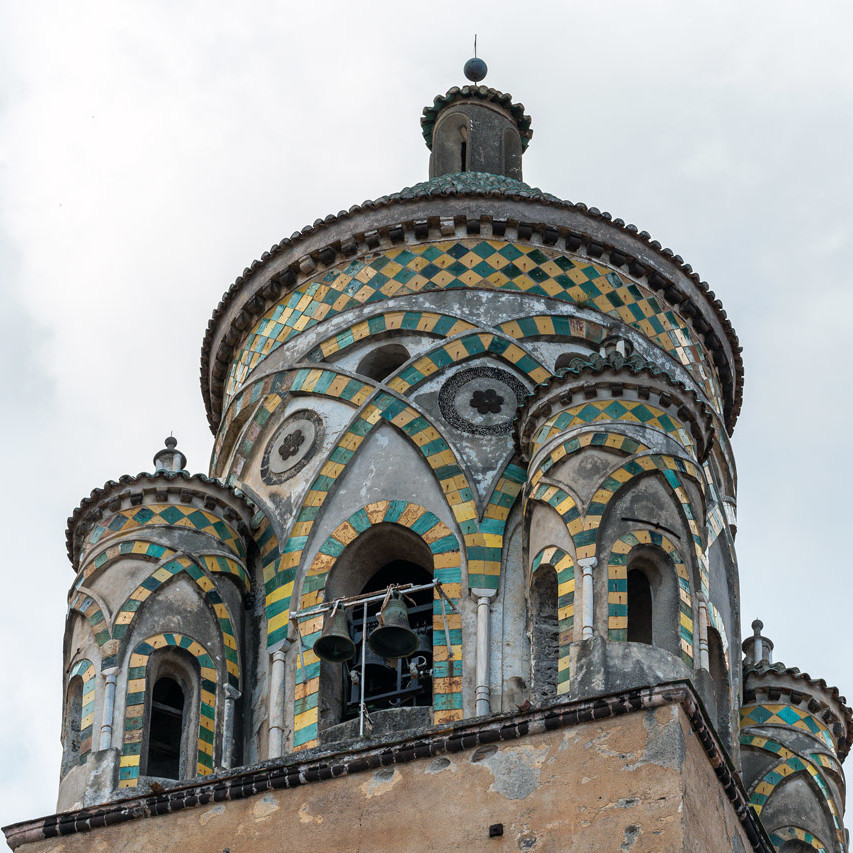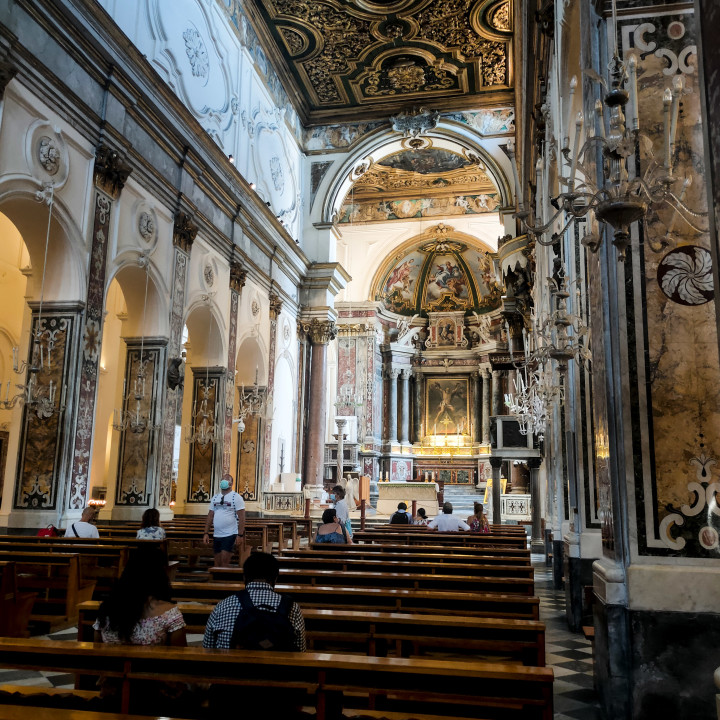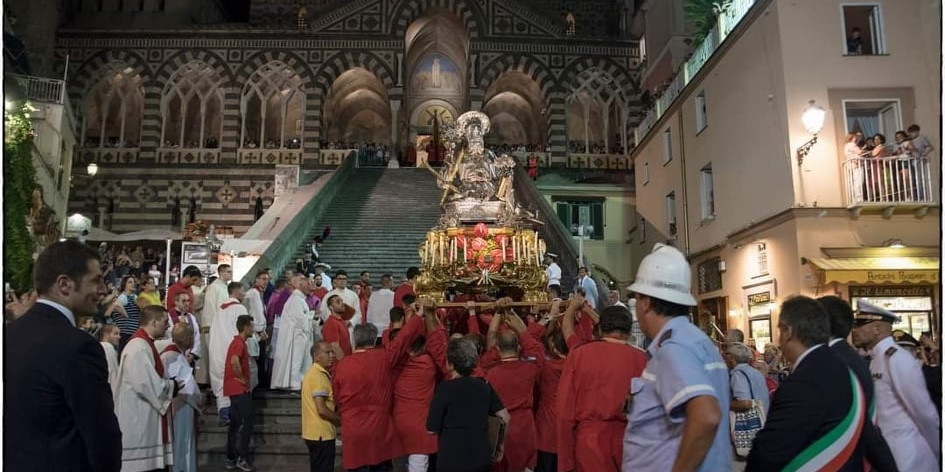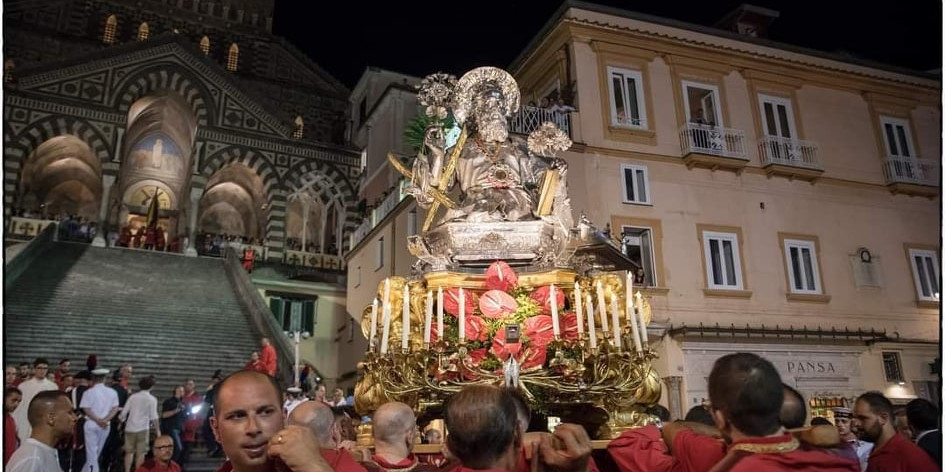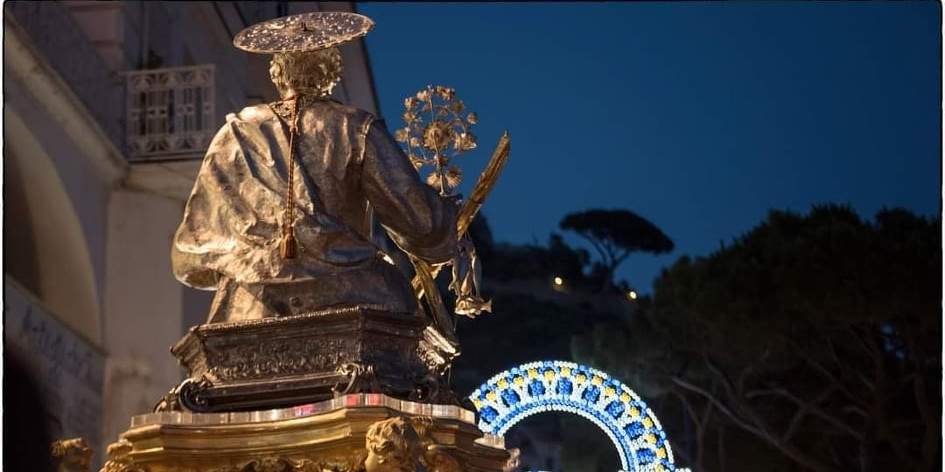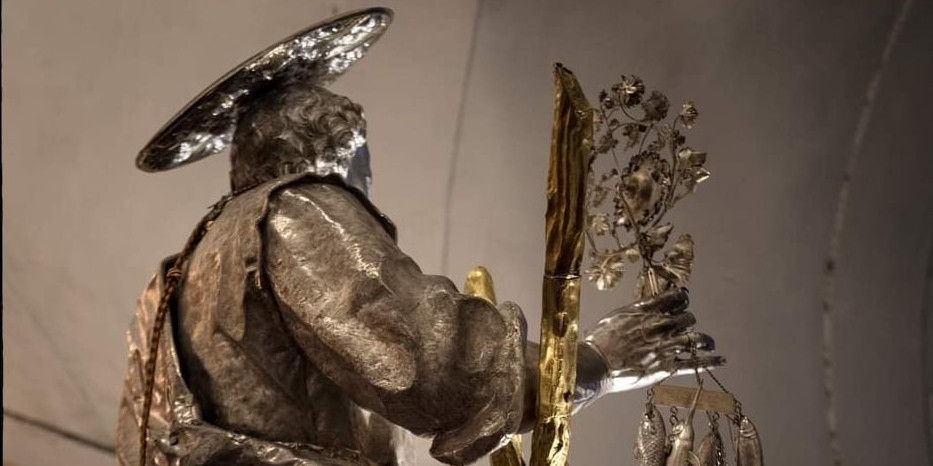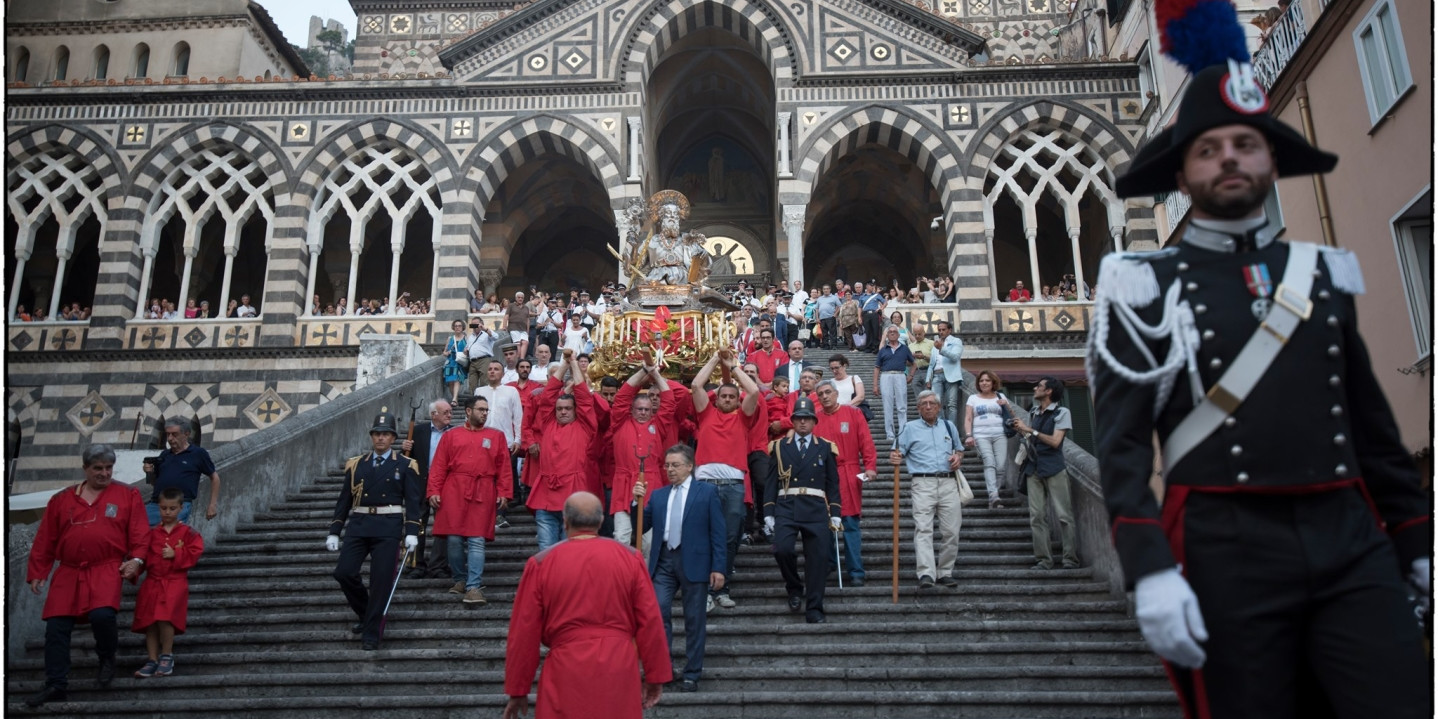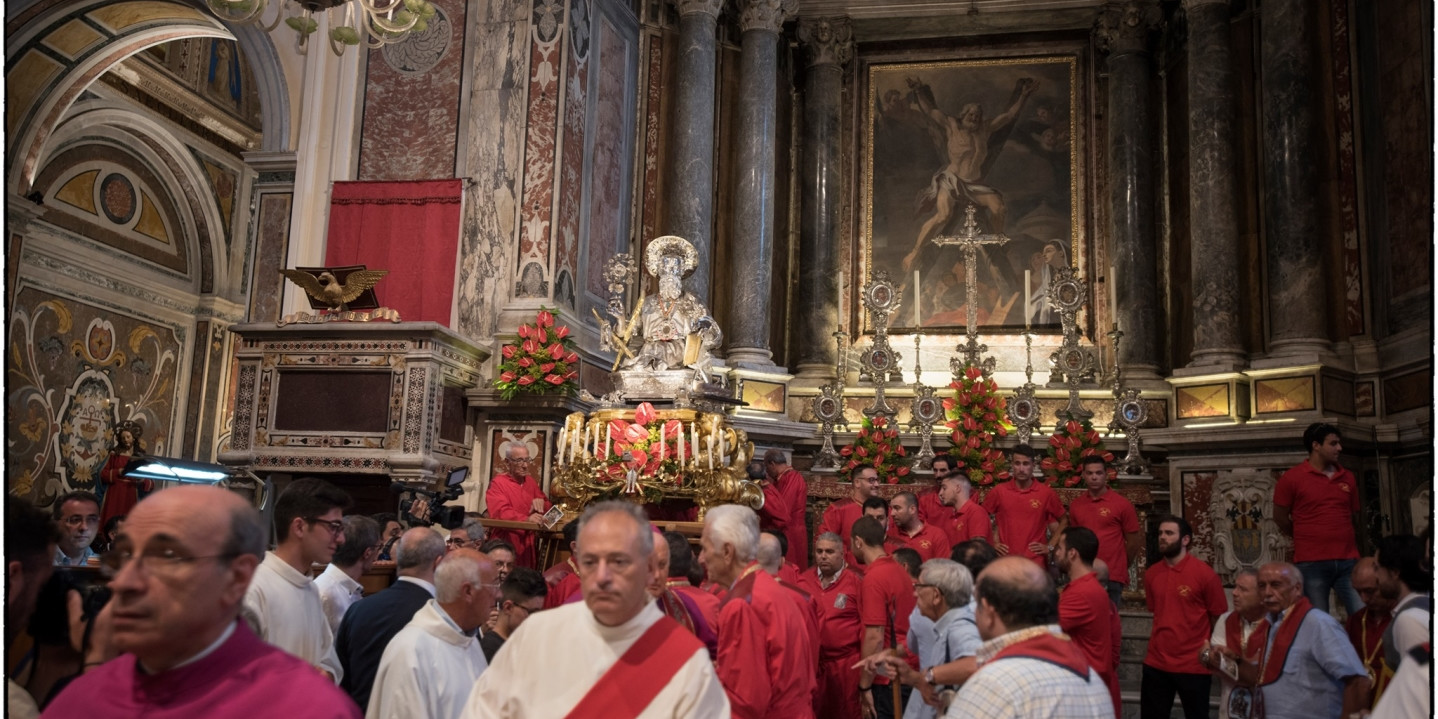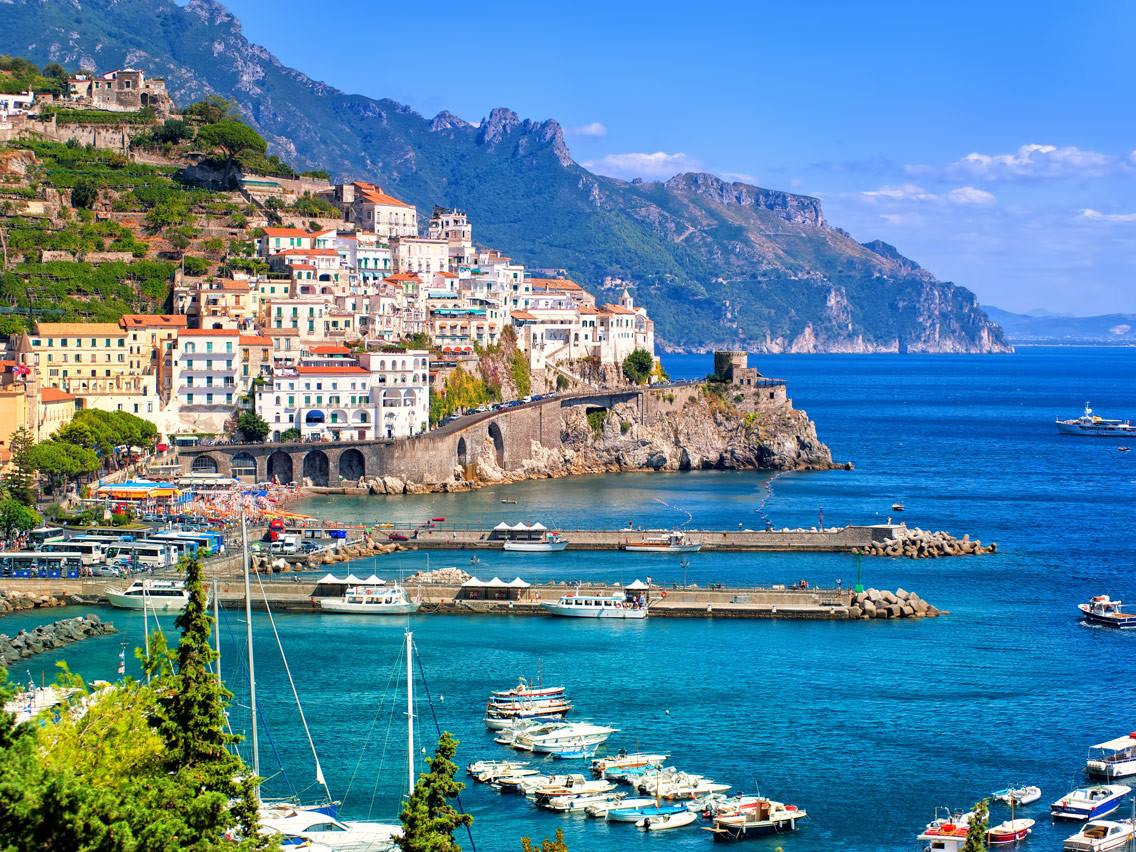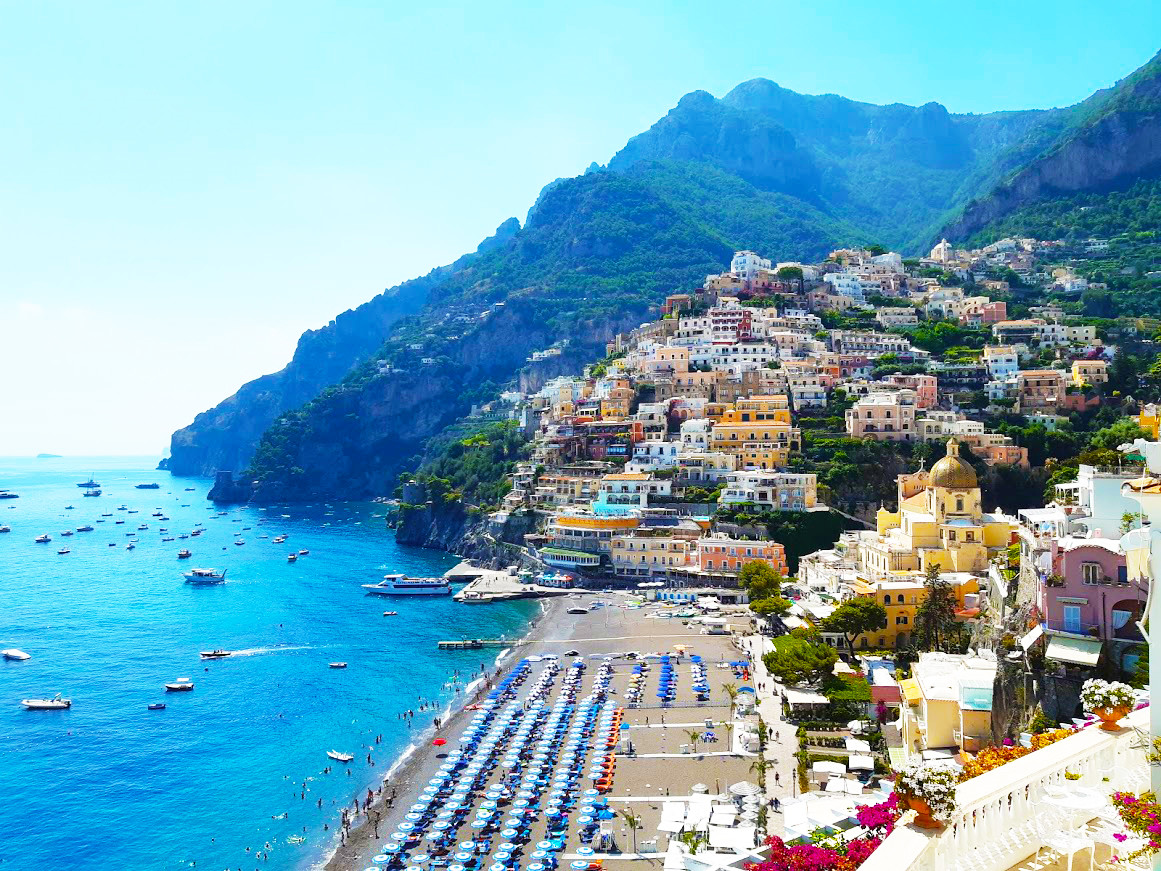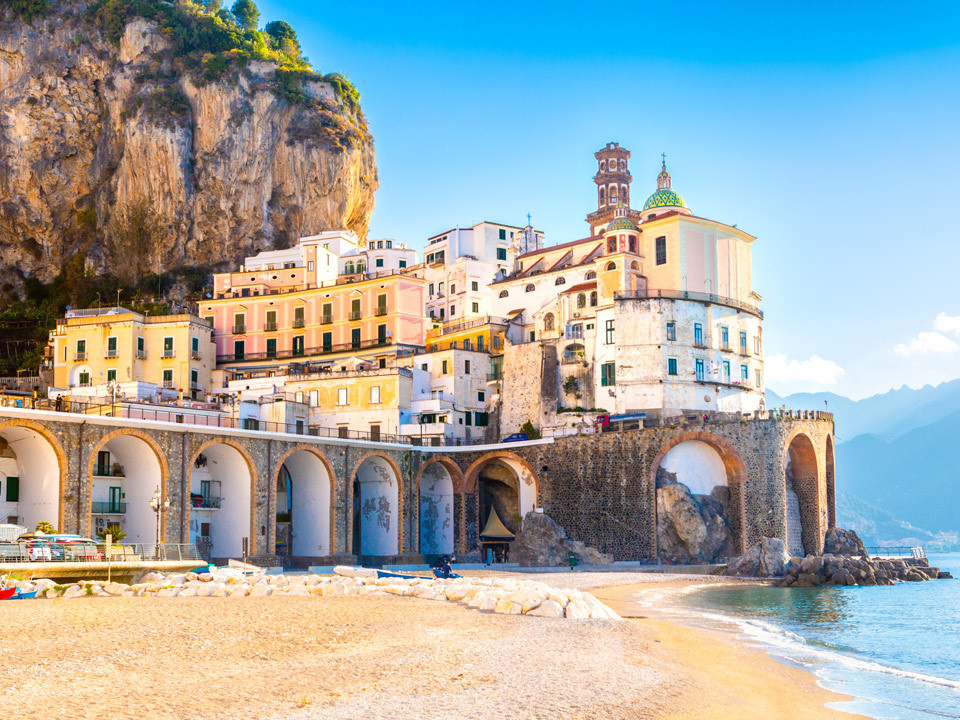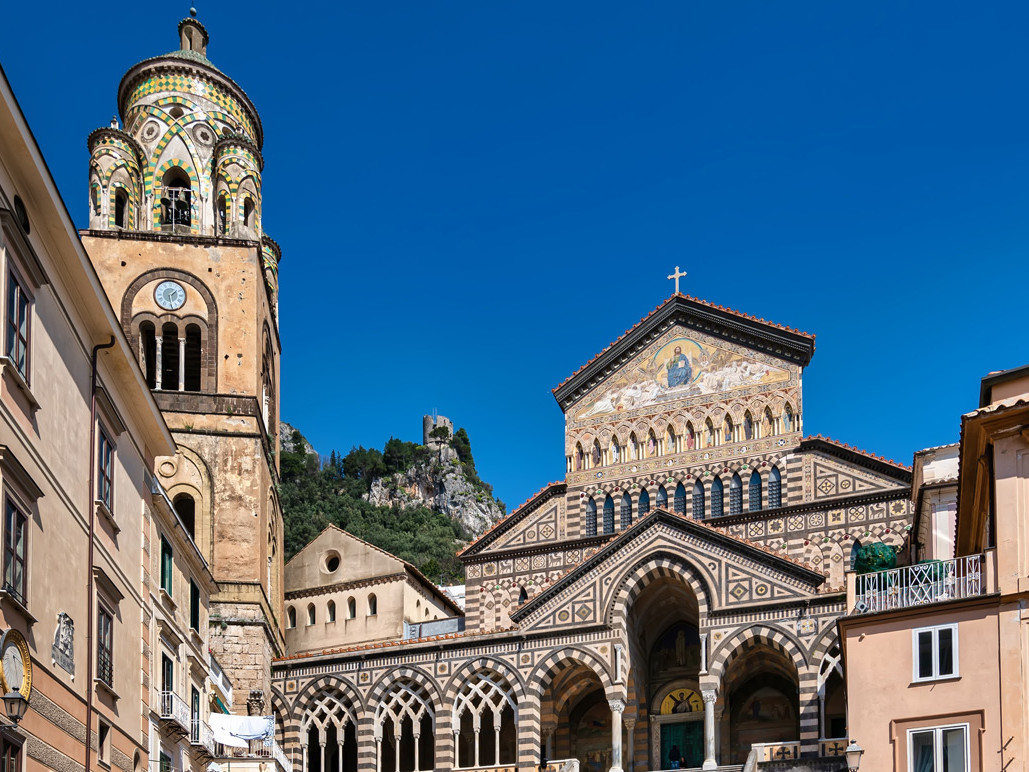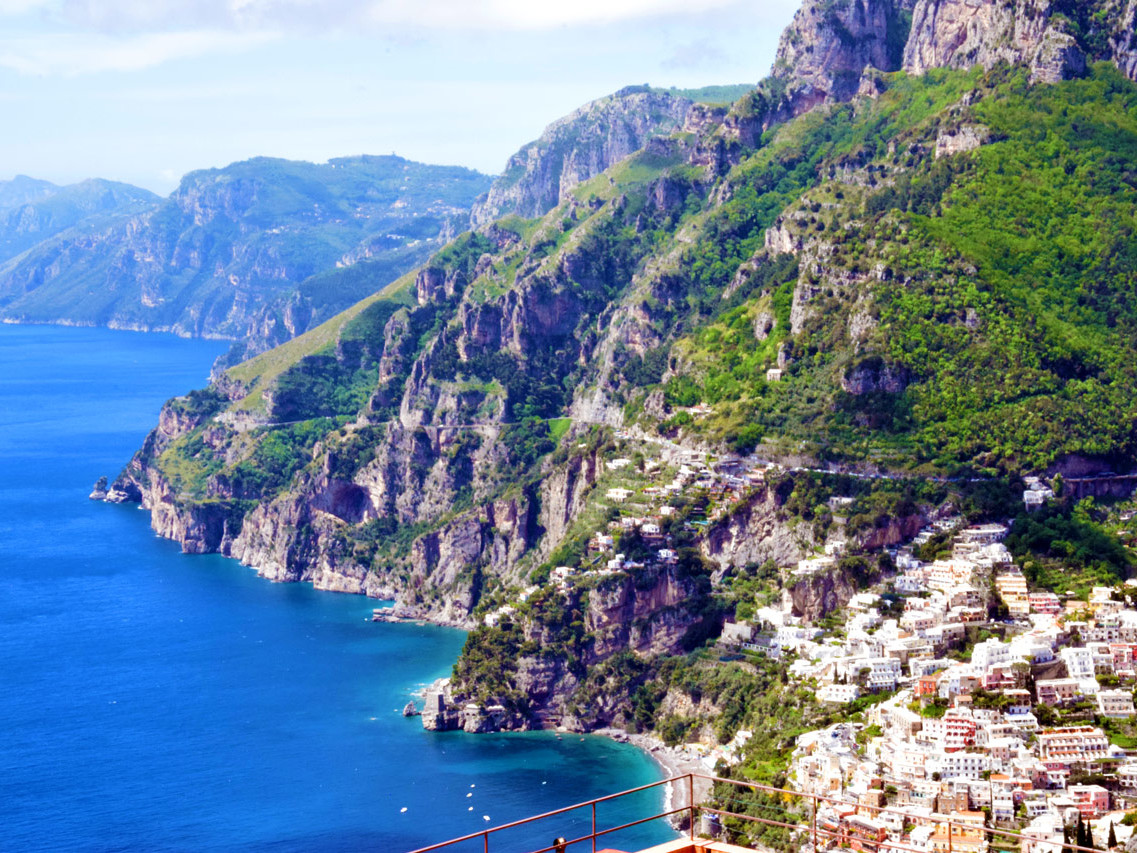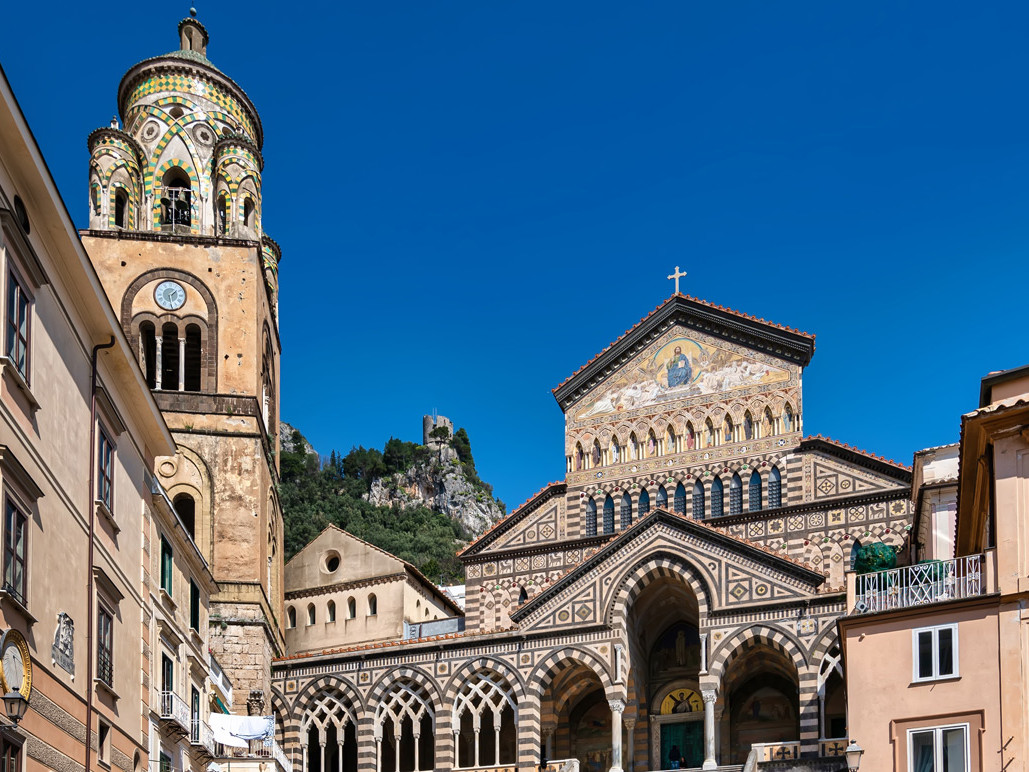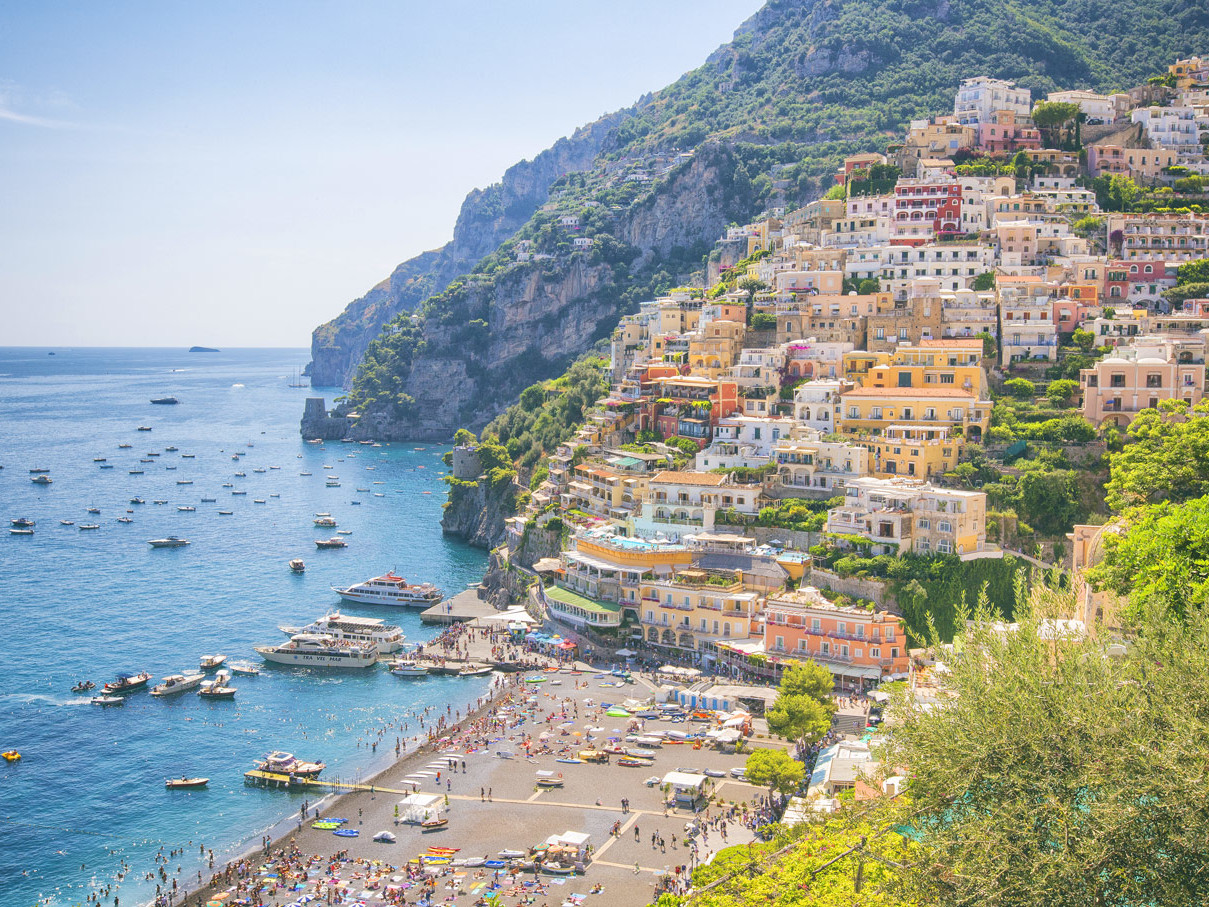THE CATHEDRAL OF AMALFI
The majestic Cathedral of Saint Andrea, a symbol of the Amalfi Coast, is a must-see if you are in Amalfi.
by Annalisa Russo
The Cathedral (Duomo di Sant’Andrea) dedicated to the patron Saint Andrea, not so far from the port, stands in the heart of the town of Amalfi, in the homonymous square “Piazza Duomo”. It has an immense staircase of 62 steps and an amazing facade that will surprise the tourists with its beauty.
share this article
The Cathedral of Saint Andrea - Amalfi
Amalfi: the Ancient Maritime Republic
The monumental complex of the Cathedral consists of the Cloister of the Paradise, the Basilica of the Crucifix that houses a museum, the Crypt, and the Cathedral of Saint Andrea and it is, actually, a testimony of the glorious past of Amalfi. It was, as a matter of fact, one of the four Maritime Republics that during the golden age was a point of contact between the occidental and the oriental world. In this way, the cathedral symbolizes the encounter between these two worlds.
In the first twenty years of the 13th century, the Cathedral was renovated in baroque style at the behest of the archbishop Michele Bologna. The facade you can enjoy today dates from the 19th century, because the initial one fell down in 1861 for the strong wind. The bell tower, instead, was built during the 12th and 13th centuries, and it is the original one. As a result of this, Amalfi has become an heir of two different cultures: the Roman one and the Byzantine one. As a matter of fact the first two orders of the bell tower are characterized by biforas and triforas with classic columns and capitals from the Romanesque period, meanwhile, the belfry (the highest part of the bell tower) presents intertwined arches decorated with polychromatic majolica tiles that recall a Moorish style.
The Cathedral of Saint Andrea
The Cathedral was founded by the duke Mansone I in 987 next to an ancient church dating from the 9th century. It was built on the ruins of a Paleochristian church of the 6th century which is known today as the Basilica of the Crucifix, whose name comes from the crucifix placed on the apse dating from the 14th century. During the middle ages, the two churches were just one monumental complex with six naves. Then, in 1266, the sixth one was demolished to allow the construction of the Cloister of the Paradise, an ancient cemetery of the nobility built between 1266 and 1268 at the behest of the archbishop Filippo Augustariccio.
All in all, this is a place that allows you to experience first-hand far-off atmospheres and different styles. Then, after the Counter-Reformation, the two buildings were divided again.
The bronze door has a great value: it was fused in Constantinople and donated to Amalfi by a rich merchant, Pantaleone de Comite Maurone. On this door, there are four silver figures representing Christ, the Virgin, and the Saints Pietro and Andrea. And according to the tradition, Saint Andrea was also the patron saint of Constantinople, the city where he preached during the 1st century AD. The relics of the Saint were taken to Amalfi in the 12th century, where today are still kept.
The Crypt was built in 1203 by the cardinal Pietro Capuano who on May 8th, 1208, placed there the relics of Saint Andrea, buried in the center of the crypt. The altar and the bronze statue of the Saint by Michelangelo Naccherino (the pupil of Buonarroti) and the marble statues representing the Saints Stefano and Lorenzo were realized during the 16th century.
The miracle of the manna
The rite of the manna takes place in the Crypt and dates from November 29th, 1304. Since that moment, every year during some religious holidays, the miracle happens. The manna is a liquid-oily substance that comes out of Saint Andrea’s tomb: when it is absent, it leads to penance and reflection, when it is present is a sign of protection and encouragement to continue the Christian life.
La Corsa del Santo (the Saint’s run)
One of the most heartfelt events in Amalfi is the procession of Saint Andrea that takes place twice a year: on June 27th and on November 30th On these occasions, the precious silver bust of the Saint, dating from the 18th century, parades through the narrow streets of Amalfi carried on the shoulders of the bearers (men in red).
The procession ends with la corsa del Santo (the Saint’s run) along the staircase of the Cathedral with the sound of Rossini’s Mosè in Egitto as background. As soon as the statue reaches the last step, the square greets the Saint with a warm applause. The run took place for the first time on June 27th, 1946 as a protest of the bearers against the bishop Moscato who forbade the procession near the beach. That day the statue, after being taken through the streets of Amalfi and towards the port, was carried to the top of the staircase rapidly on its way back to the Cathedral. At the same time, people requested the sound of the church bells (that was forbidden) and the Eucharistic blessing.
To sum up, those few seconds used to take the statue on the top of the stairs, allow you to feel great emotions and to experience first-hand the faith that always animates the citizens of the Amalfi Coast.
La Corsa del Santo ( the Saint’s run ): photo e video credits Annamaria Vinaccia
- According to a legend, if you go up these stairs hand in hand with the person you love, you will never get married.
- The traditional Saint’s run was celebrated in 1952 in the Italian movie La macchina ammazzacattivi directed by Roberto Rossellini.
- According to Hundredrooms, the bell tower of the Cathedral of Amalfi is among the 20 most beautiful bell towers in Italy.
fun facts
share this article


